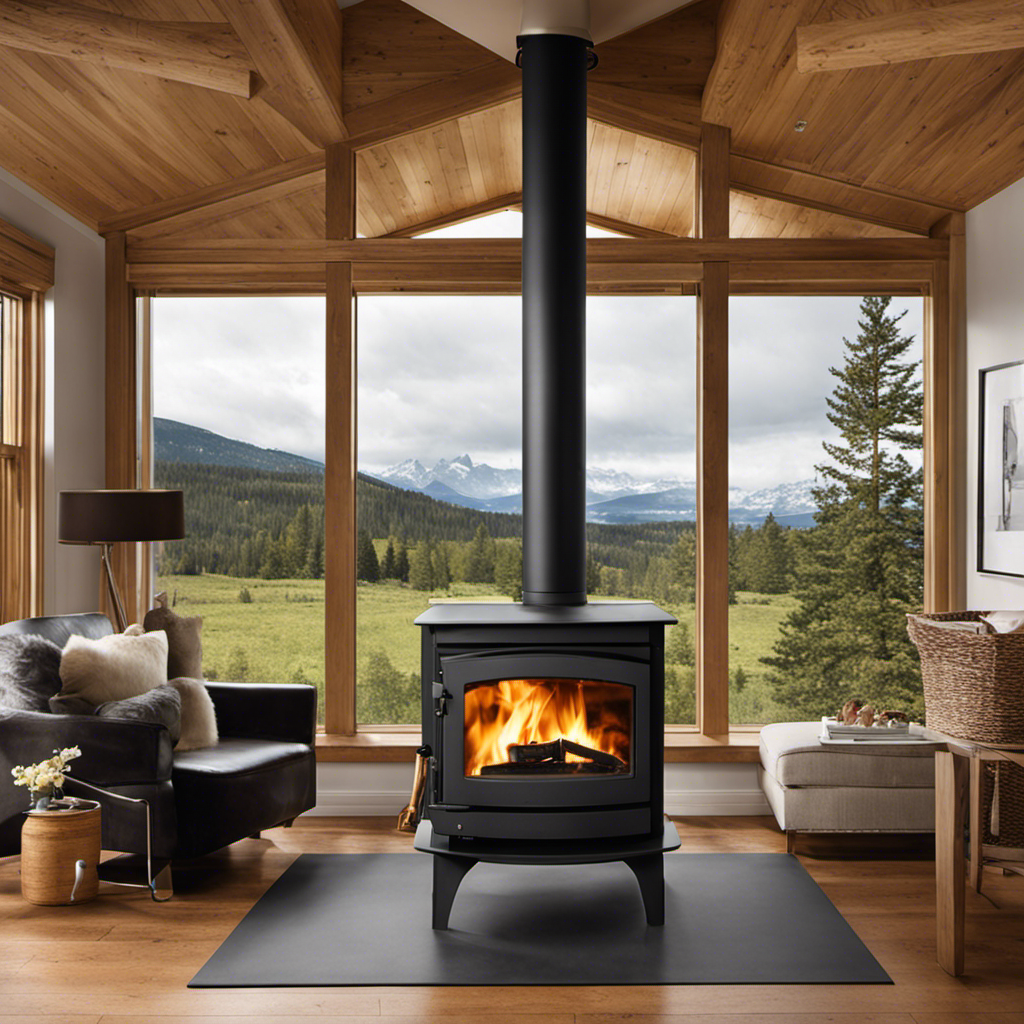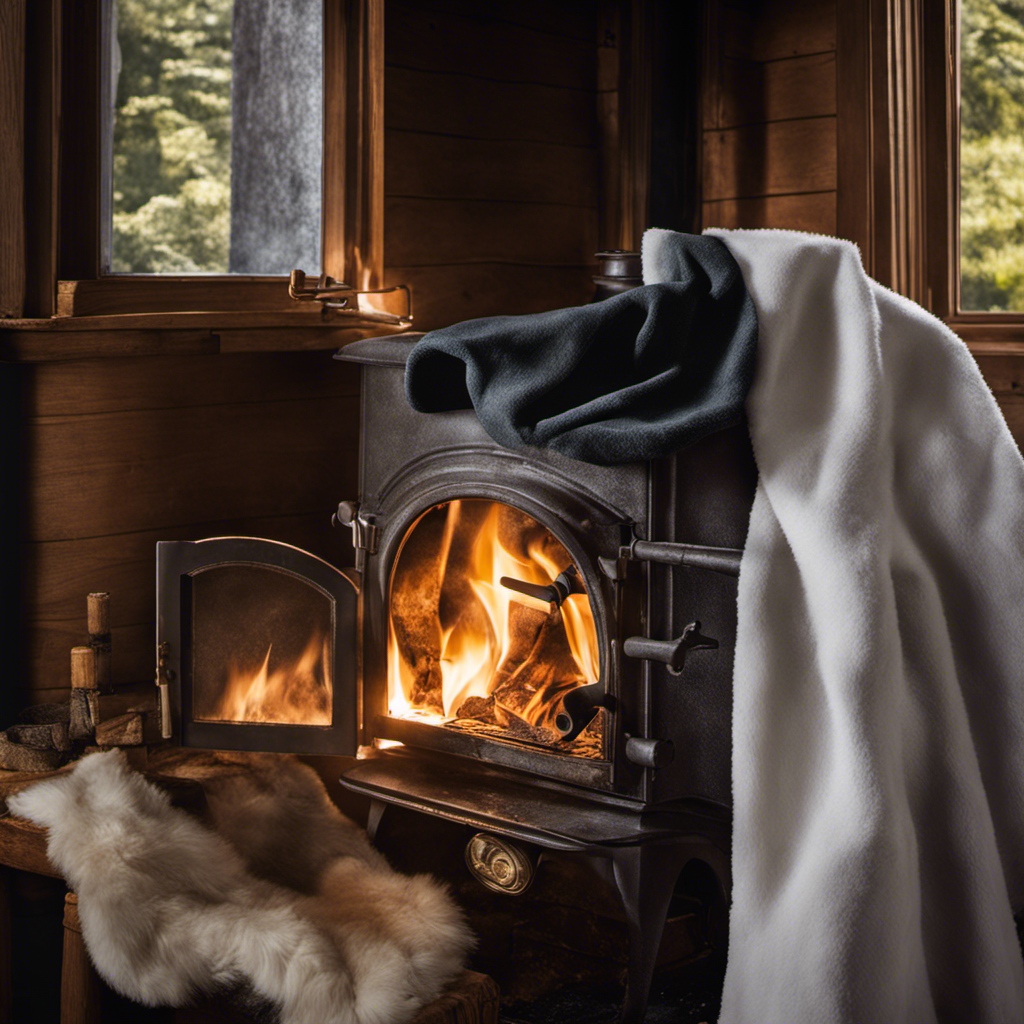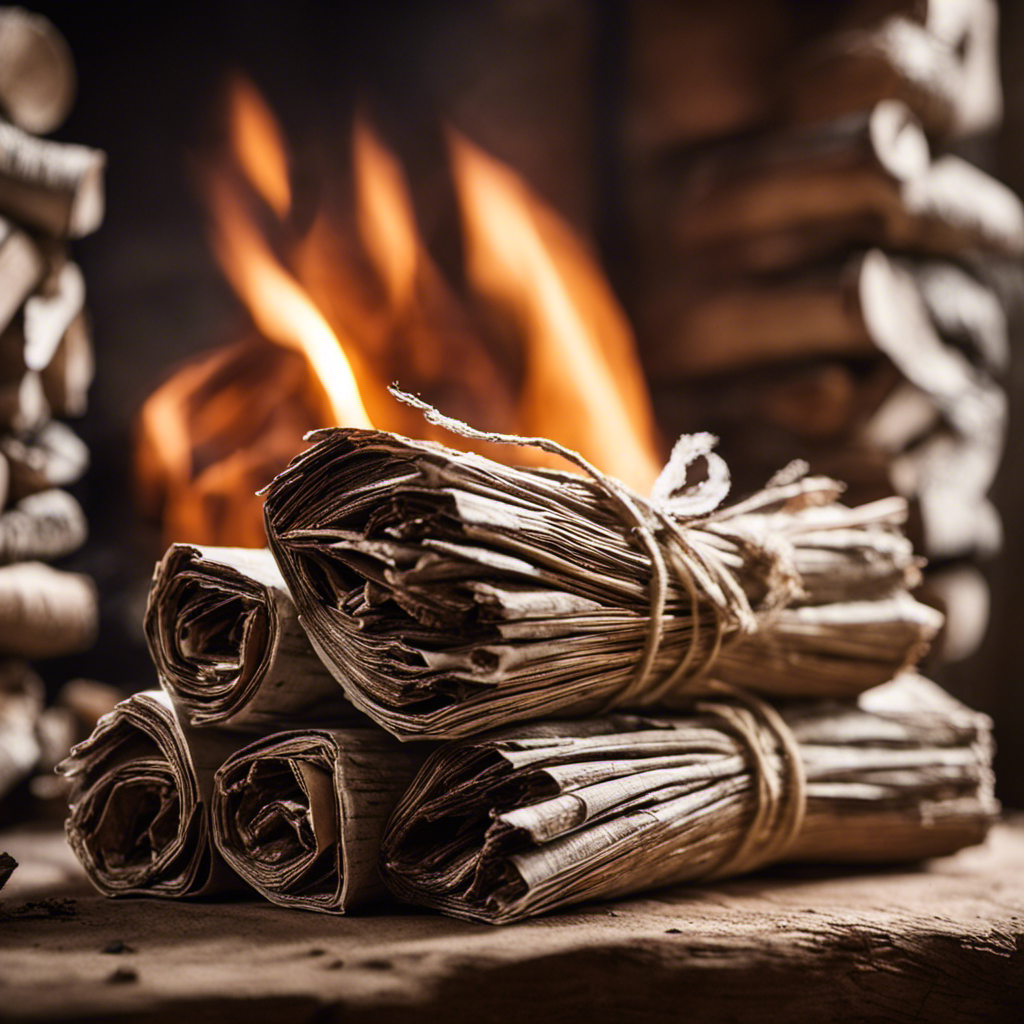Are you aware that a dirty glass on your wood-burning stove can decrease its efficiency by as much as 20%? It is crucial to keep the glass clean for the stove to work at its best and to ensure safety.
In this article, I will share my expertise on the best cleaning products, tools, and techniques to keep your wood stove glass spotless.
With regular maintenance, you can ensure a clear view of the mesmerizing flames while maximizing the heat output of your wood stove.
Key Takeaways
- Regular maintenance promotes efficient and safe operation of the wood stove
- Use eco-friendly and biodegradable cleaning products to avoid harmful residues and toxic fumes
- Avoid abrasive materials and vigorous scrubbing to prevent scratches on the glass
- Burn dry and seasoned wood and ensure proper ventilation to prevent glass fogging and condensation
Understanding the Importance of Regular Maintenance
I understand the importance of regular maintenance for keeping my wood stove glass clean. Regular maintenance not only ensures the longevity of the stove but also promotes efficient and safe operation.
One of the benefits of using natural cleaning solutions is that they’re environmentally friendly and don’t leave harmful residues on the glass. Avoiding harsh chemical cleaners is important as they can damage the glass and even emit toxic fumes when heated.
It’s also crucial to avoid using abrasive materials or scrubbing vigorously, as they can scratch the glass surface. Instead, using a soft cloth or sponge with natural cleaning solutions will effectively remove soot and residue without causing any damage.
Choosing the Right Cleaning Products and Tools
To effectively clean the glass on my wood stove, it’s important to choose the right cleaning products and tools. Here are four key considerations when it comes to choosing eco-friendly options and avoiding abrasive materials:
-
Eco-friendly cleaning products: Look for cleaners that are labeled as environmentally friendly and biodegradable. These products are designed to minimize their impact on the environment while still effectively removing soot and grime from the glass.
-
Non-abrasive tools: Avoid using abrasive materials like steel wool or harsh scrub brushes, as they can scratch the glass surface. Instead, opt for soft microfiber cloths or gentle sponges that won’t cause any damage.
-
Vinegar and water solution: A simple mixture of vinegar and water can be an effective and eco-friendly cleaning solution. Vinegar helps to cut through grease and residue, leaving the glass clean and streak-free.
-
Newspaper: Surprisingly, newspaper can be a great tool for cleaning glass. Its texture helps to remove stubborn stains while leaving no lint or streaks behind.
Preparing the Glass Surface for Cleaning
Using a soft cloth gently, wipe away any loose dirt or debris from the glass surface before applying any cleaning solution. This step is crucial in preparing the glass surface for effective cleaning.
Once the surface is free from loose dirt, it’s ready for the application of cleaning solutions. These solutions are specifically designed to remove stubborn stains and grime from glass surfaces.
When selecting a cleaning solution, it’s important to choose one that’s safe for use on glass and doesn’t leave streaks or residue behind.
To remove stubborn stains, apply the cleaning solution to the cloth and gently scrub the affected area in a circular motion. Rinse the cloth frequently and continue until the stains are completely removed.
Remember to always follow the manufacturer’s instructions for the cleaning solution to ensure safe and effective results.
Implementing Effective Cleaning Techniques
To effectively clean glass surfaces, wipe away loose dirt and debris before applying a safe cleaning solution. Here are four techniques to implement for a thorough and efficient cleaning process:
-
Use a non-abrasive cloth or sponge to gently remove any loose dirt or debris from the glass surface. This step is crucial in preventing scratches and further damage.
-
Choose a safe cleaning solution specifically designed for glass surfaces. Avoid using harsh chemicals or abrasive cleaners that can cause discoloration or damage to the glass.
-
Apply the cleaning solution to the cloth or sponge, rather than directly onto the glass. This helps to control the amount of solution used and prevents oversaturation.
-
Gently wipe the glass in a circular motion, focusing on any stubborn stains or residue. Apply slight pressure if needed, but be careful not to scrub too vigorously as this can also cause damage.
Maintaining the Cleanliness of the Glass on Your Wood Stove
I frequently wipe down the glass on my wood stove, and I also use a glass cleaner to maintain its cleanliness. As a wood stove enthusiast, I understand the importance of keeping the glass clear and free from fogging or stubborn soot stains. To prevent glass fogging, it is essential to burn dry and seasoned wood, as wet or green wood can produce excess moisture and lead to fogging. Additionally, ensuring proper ventilation and air circulation in the room can help reduce condensation on the glass. When it comes to removing stubborn soot stains, using a specialized glass cleaner specifically designed for wood stoves is recommended. These cleaners are formulated to dissolve and remove soot without damaging the glass surface. Regularly cleaning the glass not only enhances the aesthetic appeal of the wood stove but also ensures optimum heat transfer and efficiency.
| Preventing Glass Fogging | Removing Stubborn Soot Stains |
|---|---|
| Burn dry and seasoned wood | Use a specialized glass cleaner |
| Ensure proper ventilation | Specifically designed for wood stoves |
| Avoid moisture buildup | Dissolves and removes soot |
| Maintain proper air circulation | Without damaging the glass surface |
| Regularly clean the glass | Enhances heat transfer and efficiency |
Frequently Asked Questions
Can I Use Regular Household Cleaning Products to Clean the Glass on My Wood Stove?
Yes, you can use regular household cleaning products to clean the glass on your wood stove. However, there are alternative cleaning methods and natural cleaning solutions that may be more effective and safer for the environment.
Is It Necessary to Clean the Glass on My Wood Stove Regularly?
Regularly cleaning the glass on a wood stove is of utmost importance. Neglecting this task could result in reduced efficiency and unsightly soot buildup. Follow these tips for maintaining a clean and efficient wood stove.
How Often Should I Clean the Glass on My Wood Stove?
To prevent the glass on my wood stove from getting dirty and remove hard water stains, I clean it regularly. By using a glass cleaner and a soft cloth, I can keep the glass looking clean and clear.
Can I Use Abrasive Materials Like Steel Wool to Clean the Glass on My Wood Stove?
I wouldn’t recommend using abrasive materials like steel wool to clean the glass on a wood stove. It can scratch the surface and potentially damage the glass. There are alternative cleaning methods that are safer and more effective.
What Should I Do if There Are Stubborn Stains or Buildup on the Glass of My Wood Stove That Regular Cleaning Techniques Cannot Remove?
If there are stubborn stains or buildup on the glass of my wood stove that regular cleaning techniques cannot remove, I would try using alternative cleaning methods. These methods can be effective in removing tough stains and keeping the glass clean.
Conclusion
To ensure the longevity and efficiency of your wood stove, regular maintenance is key. By choosing the right cleaning products and tools, preparing the glass surface, and implementing effective cleaning techniques, you can easily maintain the cleanliness of the glass on your wood stove.
Remember, a stitch in time saves nine, so don’t neglect this important aspect of stove upkeep. Keep your glass clear and enjoy a cozy and efficient wood-burning experience.











